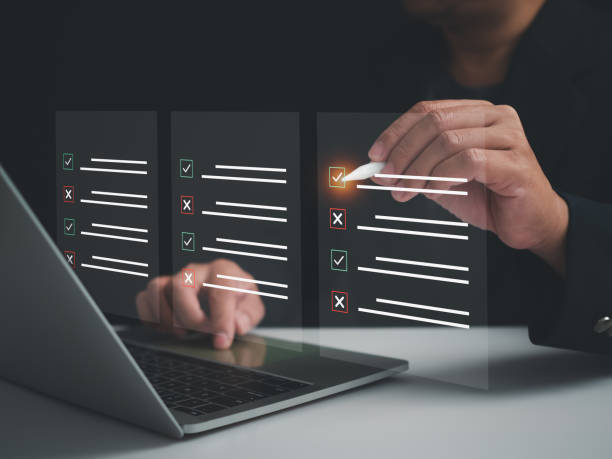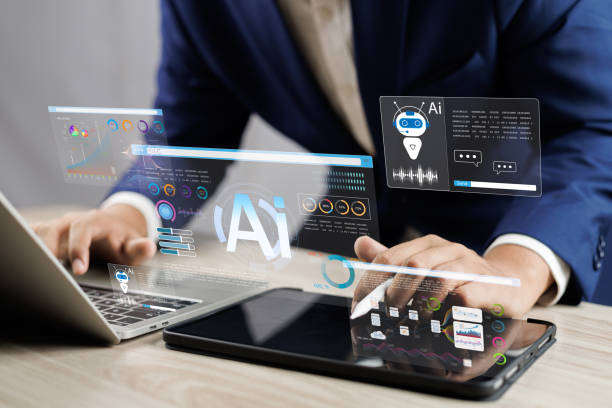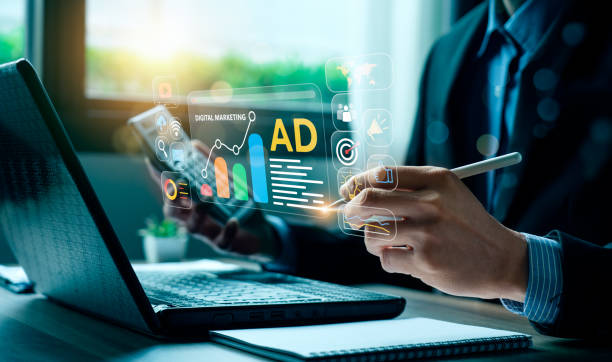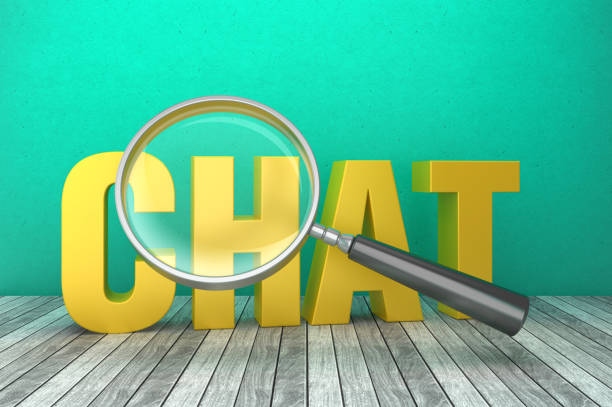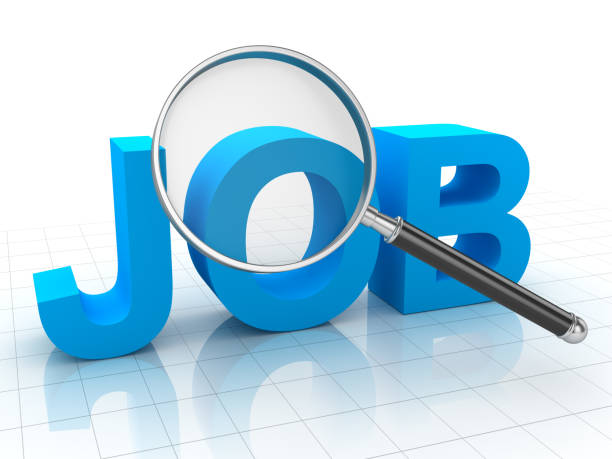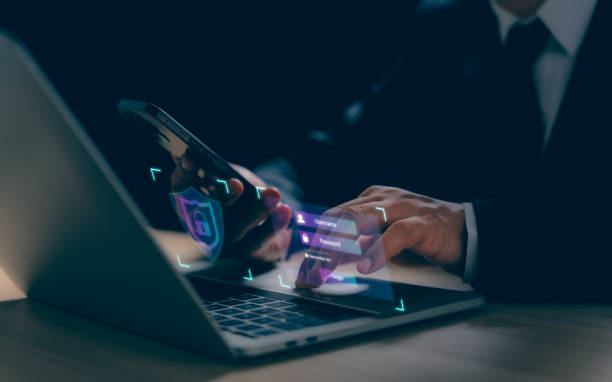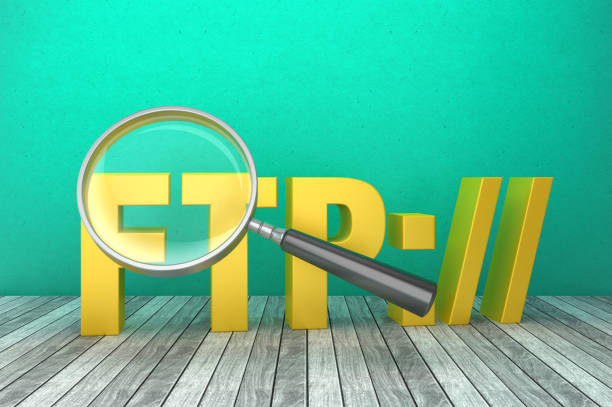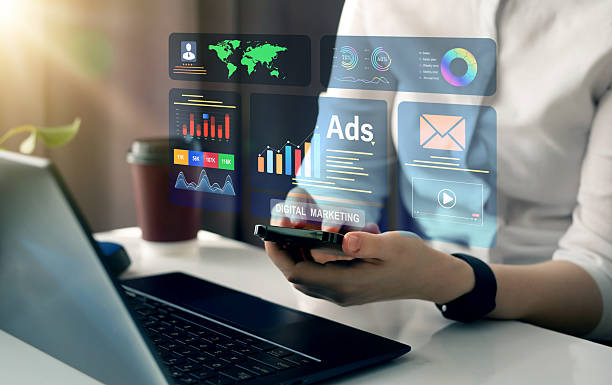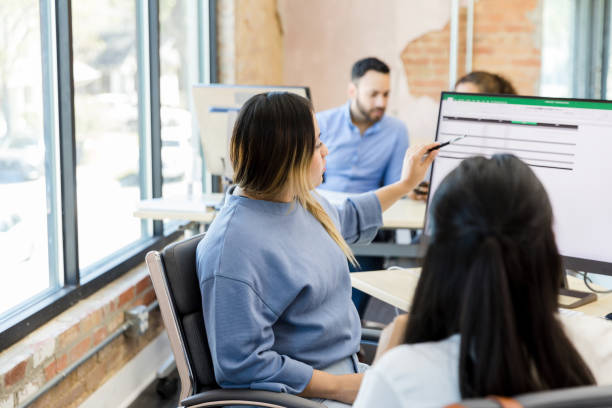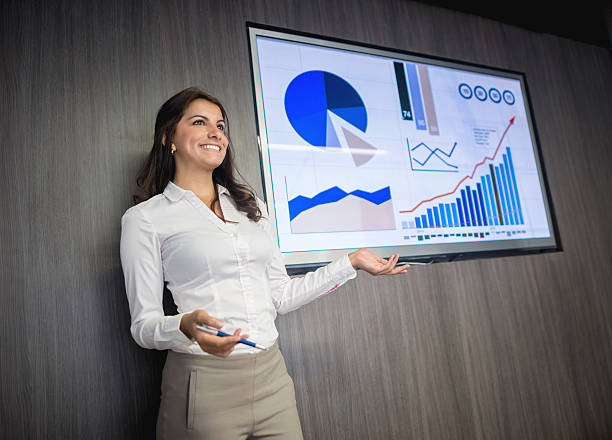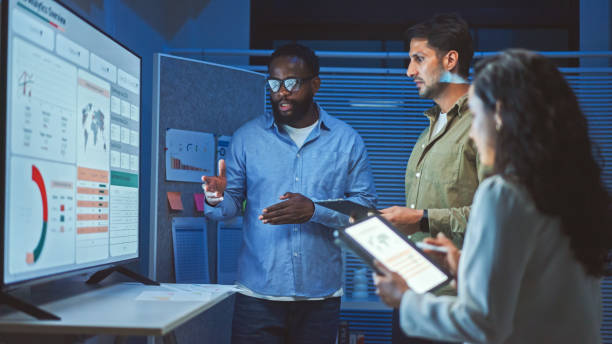What is Internal SEO and Why is it Important?
What is Internal SEO and Why is it Important?
Internal SEO, or On-Page SEO, is a set of techniques and actions that are performed within your website to improve the site’s ranking in the search results of Google and other search engines.
These actions include optimizing content, site structure, HTML tags, and other internal elements of the site.
The importance of #Internal_SEO is that it helps search engines better understand the content of your site and show it to users who are looking for related information.
Without proper internal SEO, even with the best content, your site may not be visible in search results.
In general, internal SEO is an effort to improve the site’s ranking in search engines by optimizing various elements of website pages.
To better understand the importance of internal SEO, you can refer to Wikipedia.
On-page SEO (internal SEO) is a very important aspect of an SEO strategy that deals with optimizing various elements within your website.
Unlike off-page SEO, on-page SEO focuses on the factors within your website to improve search engine rankings and visibility.
On-page SEO ensures that search engines can understand, index, and effectively rank your website’s content for users.
Did you know that a weak corporate website loses many opportunities for you every day? Solve this problem forever with professional corporate website design by Rasaweb!
✅ Creating a powerful and reliable image of your brand
✅ Attracting new customers and increasing sales in a targeted manner
⚡ [Get Free Website Design Consultation]
Keyword Research is the Foundation for Internal SEO
Keyword Research is the Foundation for Internal SEO
Keyword research is the first and most important step in internal SEO.
You need to identify keywords related to your business that users use to search for your products or services.
There are various tools such as Google Keyword Planner, Ahrefs, and Moz Keyword Explorer that can help you find suitable keywords.
After finding the keywords, you should use them in the site’s content, titles, meta descriptions, and HTML tags.
Note that excessive use of keywords (Keyword Stuffing) not only does not help improve the site’s ranking, but may also lead to the site being penalized by Google.
It is better to focus on the quality and relevance of the content to the needs of users instead of focusing on the number of keywords.
Identifying competitors’ keywords can give you a good view for choosing the main keywords.
Click here to preview your posts with PRO themes ››
To choose the best keywords for internal SEO (on-page SEO), you need to use various tools that help you in this field and try to find the high-traffic keywords of competitor sites by examining them.
You can use tools like Ahrefs for this.
Internal SEO helps you increase your site’s ranking in search engines by identifying suitable keywords and creating quality content.
Optimizing Titles and Meta Descriptions
Optimizing Titles and Meta Descriptions
Title Tags and Meta Descriptions are two important elements in internal SEO that are displayed in search results.
Titles should be short, attractive, and contain the main keyword.
Meta descriptions should also be a summary of the page content and encourage users to click on the site link.
Try to write titles and meta descriptions uniquely for each page and avoid repeating them.
Also, the length of titles and meta descriptions should be within a certain range to be fully displayed in search results.
Titles can have a significant impact on increasing your site traffic.
Internal SEO helps you increase your site’s click-through rate by optimizing titles and meta descriptions.
Optimizing titles and meta descriptions is one of the most important principles of internal SEO (on-page SEO).
These two are the first things that users see in search results and play an important role in attracting traffic to your site.
A good title should be attractive, relevant, and contain the main keyword.
Meta descriptions should also be a summary of the page content and encourage users to click.
Following these tips will help improve your site’s internal SEO.
| Feature | Description |
|---|---|
| Title Length | Maximum 60 Characters |
| Meta Description Length | Maximum 160 Characters |
| Keywords | Use Related Keywords |
Optimizing Content for Search Engines and Users
Optimizing Content for Search Engines and Users
Content is the king of SEO.
High-quality, unique, and relevant content to the needs of users is one of the most important factors in ranking a site in search results.
Content should be updated regularly and provide new and useful information to users.
Try to organize content in a structured way using titles, subtitles, paragraphs, and images to make it easier for users to read.
Also, use related keywords in the content, but avoid Keyword Stuffing.
Your content should answer users’ questions and guide them towards buying your product or using your services.
To reach high rankings in Google, there is no way other than producing high-quality content.
Internal SEO helps you increase your site’s ranking by producing quality content and optimizing it for search engines.
Content optimization is an essential part of on-page SEO (internal SEO).
The goal is to create content that is engaging for both search engines and users.
When optimizing content, keyword research, creating high-quality content, using headings and subheadings, optimizing images, and ensuring readability are very important.
By creating engaging and optimized content, you can attract organic traffic and increase user engagement.
Does your current corporate website present a worthy image of your brand and attract new customers?
If not, turn this challenge into an opportunity with Rasaweb’s professional corporate website design services.
✅ Significantly improves your brand’s credibility and image.
✅ Paves the way for attracting leads and new customers.
⚡ Contact Rasaweb now to receive free and specialized consultation!
Optimizing Images and Videos
Optimizing Images and Videos
Images and videos can make your site’s content more attractive and interactive.
But in order for images and videos to help your site’s SEO, you need to optimize them.
First, use descriptive file names that contain keywords.
Then, use Alt tags for images to explain what the image is about.
The Alt tag helps search engines understand images and display them in image search results.
Also, reduce the size of images and videos to increase site loading speed.
Using appropriate formats for images and videos can also help improve loading speed.
Images and videos can dramatically improve the user experience.
Internal SEO helps you increase your site’s loading speed and provide a better user experience for visitors by optimizing images and videos.
Optimizing images and videos is an integral part of on-page SEO (internal SEO).
Optimized images can help by increasing page load speeds, improving user experience, and providing alternative text (alt text) to help search engines understand the image content.
Similarly, video optimization involves using descriptive file names, creating compelling descriptions, and compressing video files for smooth playback.
By optimizing images and videos, you significantly improve your site’s SEO.
Optimizing URL Structure
Optimizing URL Structure
The URL structure, or web address, is another important factor in internal SEO.
URLs should be short, readable, and contain relevant keywords.
Try to avoid long and complex URLs that contain meaningless numbers and letters.
URLs should have a logical structure and reflect your site’s structure.
For example, if your page is about “SEO training”, its URL can be example.com/blog/seo-training.
It is recommended to use hyphens (-) instead of underscores (_) in URLs.
Proper URL structure helps users and search engines easily find your site pages.
Optimized URLs are very effective in improving the site’s internal SEO.
Internal SEO helps you optimize your URL structure to help search engines and users easily find your site pages.
Optimizing URL structure is another important aspect of on-page SEO (internal SEO).
An optimized URL structure not only improves user experience but also helps search engines understand the structure of your website.
When creating URLs, use relevant keywords, keep the URL concise and descriptive, avoid special characters, and use a hierarchical structure that reflects your website’s organization.
By doing so, you can increase the crawlability and indexability of your website for search engines.
The Importance of Internal Linking
The Importance of Internal Linking
Internal linking means creating links between different pages of your site.
Internal linking helps search engines better understand your site structure and find related pages.
Also, internal linking helps users easily navigate your site and find the information they need.
Try to link to other related pages of your site on each page.
Use descriptive Anchor Texts that contain relevant keywords.
But avoid overusing keywords in the Anchor Text.
Correct internal linking can increase the amount of time a user spends on your site.
Internal SEO helps you use proper internal linking to help search engines and users easily navigate your site and find the information they need.
Internal linking plays a vital role in on-page SEO (internal SEO).
Internal links help search engines discover and index the different pages of your website.
By strategically linking related pages, you can improve your website’s navigation, enhance user experience, and distribute ranking authority throughout your website.
When linking internally, use descriptive anchor text that provides context for the destination page, and ensure that the links are relevant and valuable to users.
| Link Type | Description |
|---|---|
| Link to Main Pages | Link to Important Site Pages |
| Link to Related Articles | Link to Articles Related to the Topic |
| Link to Categories | Link to Related Categories |
Optimizing Site Loading Speed
Optimizing Site Loading Speed
Site loading speed is one of the important factors in user experience and site ranking in search results.
Users who encounter slow site loading speeds usually leave the site and go to other sites.
To optimize site loading speed, you can use various methods such as reducing image size, using CDN, enabling browser cache, and optimizing code.
There are various tools such as Google PageSpeed Insights and GTmetrix that can help you identify site loading speed problems.
A fast site can improve your site’s ranking in Google.
Internal SEO helps you provide a better user experience for visitors and increase your site’s ranking in search engines by optimizing site loading speed.
Optimizing website loading speed is very important for on-page SEO (internal SEO).
A website that loads quickly not only improves the user experience but also increases search engine rankings.
When optimizing your website speed, consider factors such as optimizing images, enabling browser caching, minimizing CSS and JavaScript code, and using a content delivery network (CDN).
By improving your website’s loading speed, you can attract more organic traffic and improve your conversion rates.
Are you bothered by losing customers due to the old appearance or slow speed of your online store? Rasaweb’s expert team solves these problems with professional online store design!
✅ Increased customer trust and brand credibility
✅ Amazing speed and great user experience
Get a free consultation with Rasaweb now ⚡
Optimizing Site for Mobile
Optimizing Site for Mobile
With the increasing use of mobile phones, optimizing the site for mobile has become more important.
Google also gives more priority to sites that are optimized for mobile.
Your site must be Responsive, which means that it automatically adapts to the screen size of different devices.
Also, fonts and buttons should be large enough for users to use easily.
The site loading speed on mobile should also be high.
You can use Google’s Mobile-Friendly Test tool to check your site’s compatibility with mobile.
Mobile-friendly sites can attract more visitors.
Internal SEO helps you provide a better user experience for mobile users and increase your site’s ranking in search engines by optimizing the site for mobile.
Mobile optimization is a crucial aspect of on-page SEO (internal SEO).
As an increasing number of users access websites via mobile devices, ensuring that your website is optimized for mobile is essential for providing an excellent user experience and improving search engine rankings.
Mobile optimization includes using responsive design, optimizing page speed, enabling easy navigation, and ensuring content is displayed correctly across different devices.
By prioritizing mobile optimization, you can reach a wider audience and increase your online presence.
Using Schema Markup
Using Schema Markup
Schema Markup is a code that helps search engines better understand your site content.
By using Schema Markup, you can provide search engines with information such as business name, address, phone number, business hours, and user reviews.
This information can be displayed in Rich Snippets in search results and increase your site’s click-through rate.
Schema Markup has different types and you can use it for different types of content such as articles, products, events, and recipes.
Schema Markup helps search engines better understand your site’s content and display it to relevant users.
Internal SEO helps you use Schema Markup to provide search engines with complete and accurate information about your site and increase your site’s ranking in search results.
Implementing Schema Markup is a powerful technique for on-page SEO (internal SEO).
Schema Markup is structured code that you can add to your website’s HTML to provide search engines with additional information about your content.
By using Schema Markup, you can enhance search engines’ understanding of your pages and improve the display of search results.
Implementing Schema Markup can lead to the display of rich snippets, increased click-through rates (CTR), and improved organic visibility.
Frequently Asked Questions
| Question | Answer |
|---|---|
| What is a Meta Title and why is it important in internal SEO? | The meta title is the most important element of internal SEO, which is displayed at the top of the browser tab and search results. This title helps search engines and users understand the main topic of the page and should include the main keyword. |
| What role does Meta Description play in internal SEO? | The meta description is a short summary of the page content that is displayed in the search results below the title. Although it does not directly affect the ranking, its attractiveness can increase the click-through rate (CTR). |
| How should keywords be used in page content? | Keywords should be used naturally and relevantly in strategic locations such as the title, headings, first paragraph, and body of the text. Avoid excessive keyword stuffing. |
| What is the importance of high-quality and comprehensive content in internal SEO? | High-quality, unique, informative, and comprehensive content that meets the user’s needs is of great importance. Search engines give a higher ranking to content that creates real value. |
| What is the application of heading tags (H1-H6) in the structure of internal SEO? | Heading tags (H1, H2, H3, etc.) are used to structure content and specify the importance of different sections. H1 is the main title of the page and each page should only have one H1. Other tags are used for subheadings. |
| How to optimize images to improve internal SEO? | To optimize images, use descriptive alt text that includes relevant keywords, reduce the image file size without losing quality, and use meaningful and relevant file names. |
| What features does a friendly URL have for internal SEO? | A friendly URL should be short, readable, descriptive, include the main keywords, and without extra characters. The URL structure should be hierarchical and logical so that it is understandable for both users and search engines. |
| How does internal linking help internal SEO? | Internal linking helps users and search engine crawlers better understand the site structure, transfer page credibility, and increase the user’s time on the site by connecting related pages to each other. |
| What is the impact of page loading speed on internal SEO? | High loading speed is vital for both user experience and SEO ranking. Slower pages may be ignored by search engines and lead to an increase in Bounce Rate. |
| Why is mobile-friendliness so important in internal SEO? | Considering the increasing number of searches via mobile devices, having a responsive and mobile-friendly site is essential for user experience and ranking in search results (Google’s Mobile-First Indexing). |
And other services of Rasa Web advertising agency in the field of advertising
Intelligent UI/UX: A creative platform to improve campaign management with precise audience targeting.
Intelligent UI/UX: A quick and efficient solution for attracting customers by focusing on attractive user interface design.
Intelligent advertising campaign: Professional optimization to attract customers using an SEO-based content strategy.
Intelligent customer journey map: Professional optimization to attract customers using key page optimization.
Intelligent UI/UX: An innovative service to increase customer attraction through an SEO-based content strategy.
And more than a hundred other services in the field of internet advertising, advertising consulting and organizational solutions
Internet Advertising | Advertising Strategy | Advertorial Report
Resources
Website Internal SEO Optimization
,What is Internal SEO or On-Page SEO?
,What is Internal SEO? On-Page SEO Optimization Training
,What is Internal SEO? Everything You Need to Know About On-Page SEO
? To elevate your business in the digital world, Rasaweb Afrin paves your way to growth with its comprehensive and specialized services, including custom website design, SEO, and content marketing. Experience a powerful and targeted presence online with us.
📍 Tehran, Mirdamad Street, next to Central Bank, South Kazerun Alley, Ramin Alley No. 6

